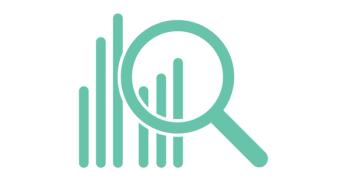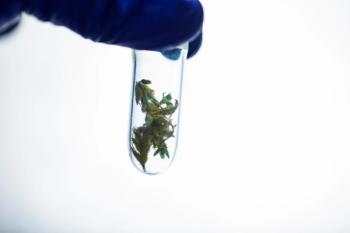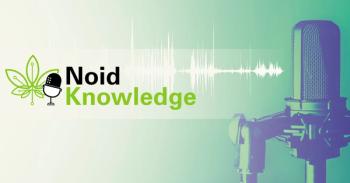
Cannabis Science and Technology
- June 2023
- Volume 6
- Issue 5
- Pages: 32-33
The Future of Cannabis Potency Testing
In this Q&A, Lake Superior State University’s Ben Southwell and Agilent Technologies’ Jean-Francois Roy suggest that laboratories should network and share best practices to optimize analytical procedures and overcome the lack of standardization in the cannabis market.
In this Q&A, Lake Superior State University’s Ben Southwell and Agilent Technologies’ Jean-Francois Roy suggest that laboratories should network and share best practices to optimize analytical procedures and overcome the lack of standardization in the cannabis market. As a step toward method standardization, they offer the relative merits and practical considerations of performing potency evaluation using mass spectrometry (MS) versus ultraviolet (UV).
The cannabis market has seen incredible growth in recent years as it transitions into various industrial applications. In 2022, the cannabis market in the United States alone was $13.2B and is projected to surpass $40B by 2030 (1). Cannabis is finding expanding applications in the cosmetics and food and beverage industries. Still, the pharmaceutical sector is the most significant market contributor. In terms of products, the market is led by cannabidiol (CBD) and tetrahydrocannabinol (THC), found in Food and Drug Administration (FDA)-approved drugs such as Epidiolex to treat seizures associated with Lennox-Gastaut Syndrome and dronabinol to treat chemotherapy-induced nausea and vomiting.
Such efforts are increasing the demand for regulatory oversight and product quality assurance. However, the industry that monitors compounds like CBD and THC is challenged by a need for more standardization and uniformity in its testing protocols. Testing laboratories often use different sample preparation, chromatographic, and detection techniques, making inter-laboratory result comparisons challenging. Some producers participate in “lab shopping,” which entails sending samples to multiple laboratories and selectively choosing data from the laboratory offering the most beneficial results.
To overcome this lack of standardization, Lake Superior State University’s Ben Southwell and Agilent Technologies’ Jean-Francois Roy suggest that labs should network and share best practices to optimize analytical procedures in this Q&A style article. As a step toward method standardization, they offer the relative merits and practical considerations of performing potency evaluation using mass spectrometry (MS) versus ultraviolet (UV).
What is the predominant detection method for potency testing?
Jean-Francois Roy: Liquid chromatography coupled to ultraviolet detection (LC-UV) is the most popular technique for potency testing because of its compatibility with a wide variety of cannabis products and its relative ease of use. The method can suffer, however, from a lack of sensitivity and specificity, leading to results that need more accuracy and reproducibility.
Ben Southwell: Ultraviolet analysis relies predominately on retention time to identify analytes, and analysis can be further complicated as multiple analytes commonly have similar adsorption spectra. The mass confirmation function of mass spectrometry, in addition to retention time, leads to significantly more confidence in the data.
How do ultraviolet and mass spectrometry detection compare in terms of dynamic ranges of sensitivity for cannabinoids?
Roy: Depending on the detection wavelength and other factors, LC-UV offers a linear response over the typical cannabinoid concentration range of 1200 µg/mL. Mass spectrometry is a more sensitive detector, allowing additional sample dilution between 50- and 500-fold. This extra dilution will reduce maintenance costs and shorten instrument downtime over time. It could also help reduce or eliminate so-called matrix effects characterized by non-cannabinoid materials that interfere with cannabinoid detection.
Will my ultraviolet results always match those obtained with mass spectrometry?
Southwell: The short answer is that it depends. The outcomes should be similar when the two techniques measure the same analytes in the same matrixes. The longer answer is that confounding analytes present in the matrix with similar adsorption spectra and retention times can introduce variations in the data, especially for ultraviolet analysis. For cannabis, this could occur when you have two isomers in a peak when you thought there was only one.
Roy: In an ideal world, ultraviolet results would always match mass spectrometry results, but many variables come into play in that comparison, especially pertaining to sample preparation and chromatography. To compare ultraviolet and mass spectrometry results, you should minimally have extracted and prepared the samples in the same way. Likewise, the chromatographic conditions (for example, column, mobile phases, flow rate, and injection volume) should be identical. Ideally, you should compare ultraviolet and mass spectrometry results with the two detectors in series to ensure that the result differences are due to the detectors themselves. However, the difference in sensitivity levels between the two techniques makes this challenging.
Are there situations where ultraviolet detection might be preferable to mass spectrometry for potency work?
Southwell: Yes, one that readily comes to mind concerns quick measurements not being used for regulatory purposes. Growers, for example, might want mid-season potency data, or small operations might wish to validate crop value before going to market. The main advantages of ultraviolet are that it is lower cost than mass spectrometry and requires significantly less staff training to implement. Also, ultraviolet platforms can be small and potentially field portable.
Will my laboratory staff be able to operate mass spectrometry without prior experience or training?
Southwell: No, each laboratory and its technicians would require additional training to implement new analysis platforms. However, that is not unique to potency analysis and should be a necessary part of any laboratory’s quality assurance program. With that said, if laboratory technicians are currently performing potency analysis by ultraviolet and chemical residual or pesticide analysis, then existing staff already have the required skills to bring a mass spectrometry potency method online. Vendor training resources and application notes can facilitate this transition.
Roy: Although mass spectrometry detection may require additional training for operators, modern mass spectrometers are easier to operate than ever before. For example, real-time feedback on the state of the instrument supports intuitive software designed to recommend appropriate acquisition parameters to neophyte users depending on their application.
How easily can I transfer my ultraviolet method to mass spectrometry?
Southwell: The transfer of methods from one platform to another should always be evaluated method by method. However, transitioning from ultraviolet to mass spectrometry is relativity straightforward as the liquid chromatography (LC) portion does not require notable change except for the mobile phases. Once the LC portion is complete, the relevant ions must be chosen for mass spectrometry analysis. Vendor application notes and specialists can shorten the implementation times for each step.
Roy: Coupling LC to mass spectrometry requires the use of volatile buffers. Thus, non-volatile modifiers such as phosphate buffers must be replaced with volatile modifiers such as ammonium acetate or formate. Once this is done, or if you already use mobile phases without non-volatile buffers, your method can be transferred to mass spectrometry. Identifying the mass (m/z) values corresponding to each of your target cannabinoids may require some test injections. Then, you should evaluate a proper calibration range for each cannabinoid, likely to differ from the ultraviolet method range.
Could mass spectrometry be used to fight lab shopping?
Southwell: Every industry that utilizes laboratory analysis to validate a product’s value faces the challenge of lab shopping. Introducing mass spectrometry-based potency analysis will increase the rigor of the data provided by the laboratory and position the laboratory to be method-compliant as additional regulatory standards are established. However, lab shopping will continue to be an issue until there is a universally accepted standard for the methods used for sample collection, preparation, and analysis.
Roy: Mass spectrometry will not solve lab shopping alone but can be part of the solution. I like the idea of mass spectrometry being used as an additional detector to better characterize the challenges associated with each matrix being tested for potency and better demonstrate the need for improved (and standardized) sample preparation protocols.
Conclusion
As the cannabis market continues to grow and the applications for products such as CBD, THC, and other cannabinoids expand in areas such as healthcare, there will be increased pressure to standardize and harmonize the methods involved in their preparation, isolation, and characterization. The expansion or transition of potency testing with mass spectrometry analysis will be part of that evolution.
Reference
- U.S. cannabis market size, share & growth report, 2030
https://www.grandviewresearch.com/industry-analysis/us-cannabis-market .
About the Authors
Ben Southwell is the Assistant Professor of Bio-Analytical Chemistry, Superior Analytics Manager at Lake Superior State University. Jean-Francois Roy is a Mass Spectrometry, Application Scientist at Agilent Technologies, Inc. Direct correspondence to: Benjamin Southwell
How to Cite this Article:
Southwell, B., Roy, J., The Future of Cannabis Potency Testing, Cannabis Science and Technology, 6(5), 32-33.
Articles in this issue
Newsletter
Unlock the latest breakthroughs in cannabis science—subscribe now to get expert insights, research, and industry updates delivered to your inbox.



